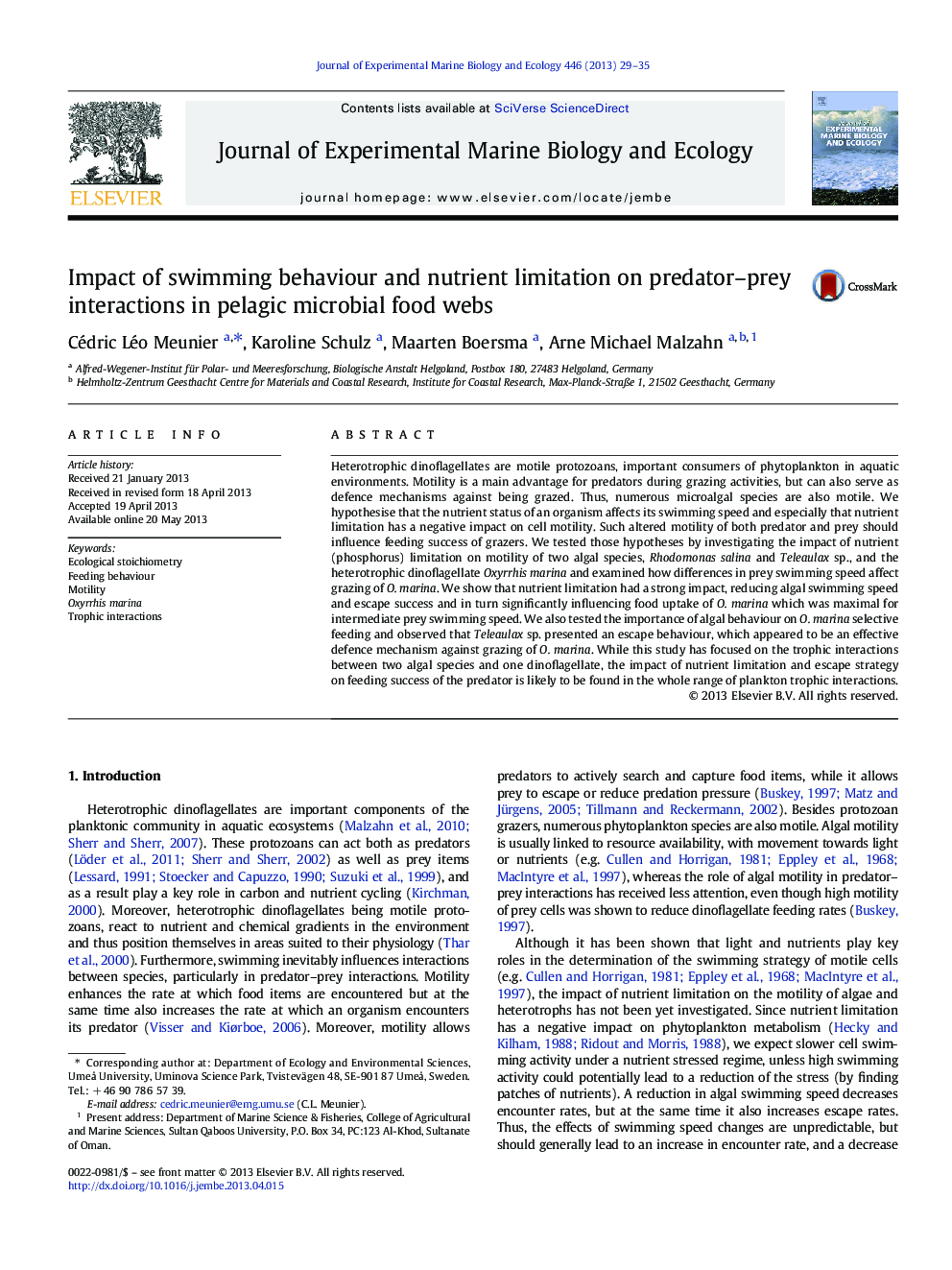| Article ID | Journal | Published Year | Pages | File Type |
|---|---|---|---|---|
| 4395702 | Journal of Experimental Marine Biology and Ecology | 2013 | 7 Pages |
•Algal swimming speed is strongly influenced by P-limitation.•Prey interspecific difference and nutrient status strongly impact grazers ingestion.•Algal escape behaviour is an effective defence mechanism against grazing.•Prey swimming speed is a main driver of predator feeding success.
Heterotrophic dinoflagellates are motile protozoans, important consumers of phytoplankton in aquatic environments. Motility is a main advantage for predators during grazing activities, but can also serve as defence mechanisms against being grazed. Thus, numerous microalgal species are also motile. We hypothesise that the nutrient status of an organism affects its swimming speed and especially that nutrient limitation has a negative impact on cell motility. Such altered motility of both predator and prey should influence feeding success of grazers. We tested those hypotheses by investigating the impact of nutrient (phosphorus) limitation on motility of two algal species, Rhodomonas salina and Teleaulax sp., and the heterotrophic dinoflagellate Oxyrrhis marina and examined how differences in prey swimming speed affect grazing of O. marina. We show that nutrient limitation had a strong impact, reducing algal swimming speed and escape success and in turn significantly influencing food uptake of O. marina which was maximal for intermediate prey swimming speed. We also tested the importance of algal behaviour on O. marina selective feeding and observed that Teleaulax sp. presented an escape behaviour, which appeared to be an effective defence mechanism against grazing of O. marina. While this study has focused on the trophic interactions between two algal species and one dinoflagellate, the impact of nutrient limitation and escape strategy on feeding success of the predator is likely to be found in the whole range of plankton trophic interactions.
